AP II - Module 6 Exam Questions and Answers
Document Content and Description Below
AP II - Module 6 Exam Questions and Answers Question 1 2.5 / 2.5 pts Which the following statements is true regarding the female reproductive system: The bladder is located posterior to the ut... erus. The rectum is located anterior to the uterus. The ovaries are the site of estrogen and egg production. It contains the site of the vas deferens A. It begins at the time of puberty. Correct Answer B. The primary oocyte divides to produce a secondary oocyte. C. Each primary oocyte produces in two to three mature ova. D. The first polar body maintains all the cytoplasm. E. B&C are true The ovarian follicle becomes the after ovulation. Your Answer: Corpus Luteum Corpus luteum Name the specific region of the reproductive system highlighted in blue below (also indicated by the arrow). Your Answer: Fimbriae Correct Answer Correct Answer Fimbriae (infundibulum) This layer of the uterus contracts during labor. Endometrium Mucosal coat Perimetrium Myometrium Serous coat Which of the following statements is false concerning the vagina? The fundus is made of elastic fibers, blood vessels, lymph vessels and nerves. (The fundus is part of the uterus) The wetness and moisture of the surface is achieved by mucous from the cervix. The elastic fibers give the vaginal wall elasticity. The mucosal lining can extend. Describe the purpose of the cervix during pregnancy. Your Answer: When a female becomes pregnant a mucus plug develops in the cervix and prevents any bacteria or pathogens from entering the uterus, thus protecting the health of the developing fetus. A firm, closed cervix also holds the developing fetus in the uterus until it reaches full term. Label the regions of the reproductive system below: (A-C) A: B: C: Your Answer: A: Prepuce B: Urethral orifice C: Vestibule True or False: Each mammary gland contains 12- 24 lobules. True one to two dozen False True or False: Milk is not produced during pregnancy because of the production of estrogen and progesterone. True These hormones suppress prolactin, needed for lactation False Blood tests indicate that estrogen and LH levels are both elevated. Your patient is most likely in what phase of the female uterine cycle? Menstrual phase Proliferative phase (Estrogen levels rise, triggering LH to be released from the anterior pituitary. Therefore, both estrogen and LH levels are high during the end of the proliferative phase. Luteal and Follicular are ovarian cycles, not uterine cycles.) Secretory phase Luteal phase Follicular phase Which of the following is true concerning the organs of the male reproductive system? The epididymis produces testosterone. The inguinal canal is located on the posterior side of the abdomen. One produced, sperm travel to the seminal vesicles for maturation. The epididymis is located on the anterior portion of the testis. The testes function to produce sperm. The join with the vas deferens to form an ejaculatory duct. Your Answer: Seminal Vesicles Correct Answer Correct Answer Seminal vesicles Question 14 10 / 10 pts Match the gland/organ with the best description(s) A-F. Select all that apply. Your Answer: 1. Seminal Vesicles: D, F --fructose, prostaglandins 2. Prostate Gland: E --alkaline fluid 3. Bulbourethral glands: A, E --alkaline fluid, first secretion 4. Testes: C --produces sperm 5. Anterior Pituitary: B - -FSH Which of the following is false concerning spermatogenesis? Production of sperm takes longer than one month Spermatogenesis begins at puberty. Each gamete has a total of 23 chromosomes. Each primary spermatocyte produces four viable gametes. Males have all the sperm at birth that will be made during the lifetime. Label the regions of reproductive system below: (A-C) To receive full credit you must name specific regions. A: B: C: D: E: Your Answer: A: Corpus cavernosum B: Glands penis C: Spongy Urethra D: Testis E: Epididymis A: Corpus cavernosum B: Glands penis C: Corpus spongiosum D: Testis E: Epididymis Name and discuss the purpose of the region of sperm indicated by the arrow in the figure below. Your Answer: The head is almost entirely nucleus containing the cell DNA with a crown called the acrosome which contains enzymes that breakdown the membrane of the egg to allow the sperm to penetrate. Discuss in detail the action of sperm needed to fertilize an egg. Your Answer: The egg releases chemicals that attract the sperm. Sperm cells release enzymes that break apart the corona radiata, follicle cells surrounding the egg. Once this is accomplished, more sperm release acrosomal enzymes that make a hole in the membrane of the egg, allowing one sperm cell to combine with the egg. When the union of egg and one sperm occurs, the membrane of the egg instantly chemically changes, preventing other sperm from penetrating the egg. Which of the following is true concerning human cells? A. Haploid cells contain the full number of chromosomes (46). B. Diploid cells contain half the number of chromosomes (23). C. Gamete cells are haploid cells. D. A zygote has 23 chromosomes. E. A&B are true Discuss in detail the layers of cells (of the blastocyst) which form the embryo. Your Answer: ● Ectoderm- The skin and nervous tissue develop from the outer ectoderm layer. ● Endoderm- The inner endoderm layer forms the glands (thyroid, parathyroid and thymus), solid organs (liver and pancreas) and the lining of the hollow organs of the digestive and respiratory systems. ● Mesoderm- All other tissues, including the cardiovascular system, red blood cells, and muscle develop from the middle mesoderm layer. Label each of the following as occurring during the: 1st trimester, 2nd trimester or 3rd trimester 1. Lungs fully mature: 3rd trimester 2. Lanugo develops: 2nd trimester 3. First fetal movements felt: 2nd trimester 4. Neurulation: 1st trimester 5. Testes descend to scrotum: 3rd trimester Answer 1: 3rd trimester Answer 2: 2nd trimester Answer 3: 2nd trimester Answer 4: 1st trimester Answer 5: 3rd trimester Find the steps that correctly order neurulation: A. Ectoderm→ convergence→ neural groove → neural tube → spinal cord B. Endoderm→ neural groove → convergence → spinal cord → neural tube C. Ectoderm→ neural tube → convergence → neural groove → brain D. Endoderm→ convergence→ neural tube → neural groove → spinal cord Name and discuss the stage of labor that best describes the figure below: Your Answer: The first stage, dilation of the cervix, is the time it takes for the mother’s cervix to dilate to ten centimeters. During this stage the uterus contracts, which pushes the baby’s head against the cervix causing it to dilate (widen). This stage of labor is the longest, lasting, on average 6-10 hours. Oxytocin is a hormone that is released from the posterior pituitary gland to stimulate contractions in the myometrium of the uterus. As contractions continue, oxytocin is increasingly released until the baby is born. [Show More]
Last updated: 2 years ago
Preview 1 out of 23 pages

Buy this document to get the full access instantly
Instant Download Access after purchase
Buy NowInstant download
We Accept:

Reviews( 0 )
$13.00
Can't find what you want? Try our AI powered Search
Document information
Connected school, study & course
About the document
Uploaded On
Dec 01, 2021
Number of pages
23
Written in
Additional information
This document has been written for:
Uploaded
Dec 01, 2021
Downloads
0
Views
160


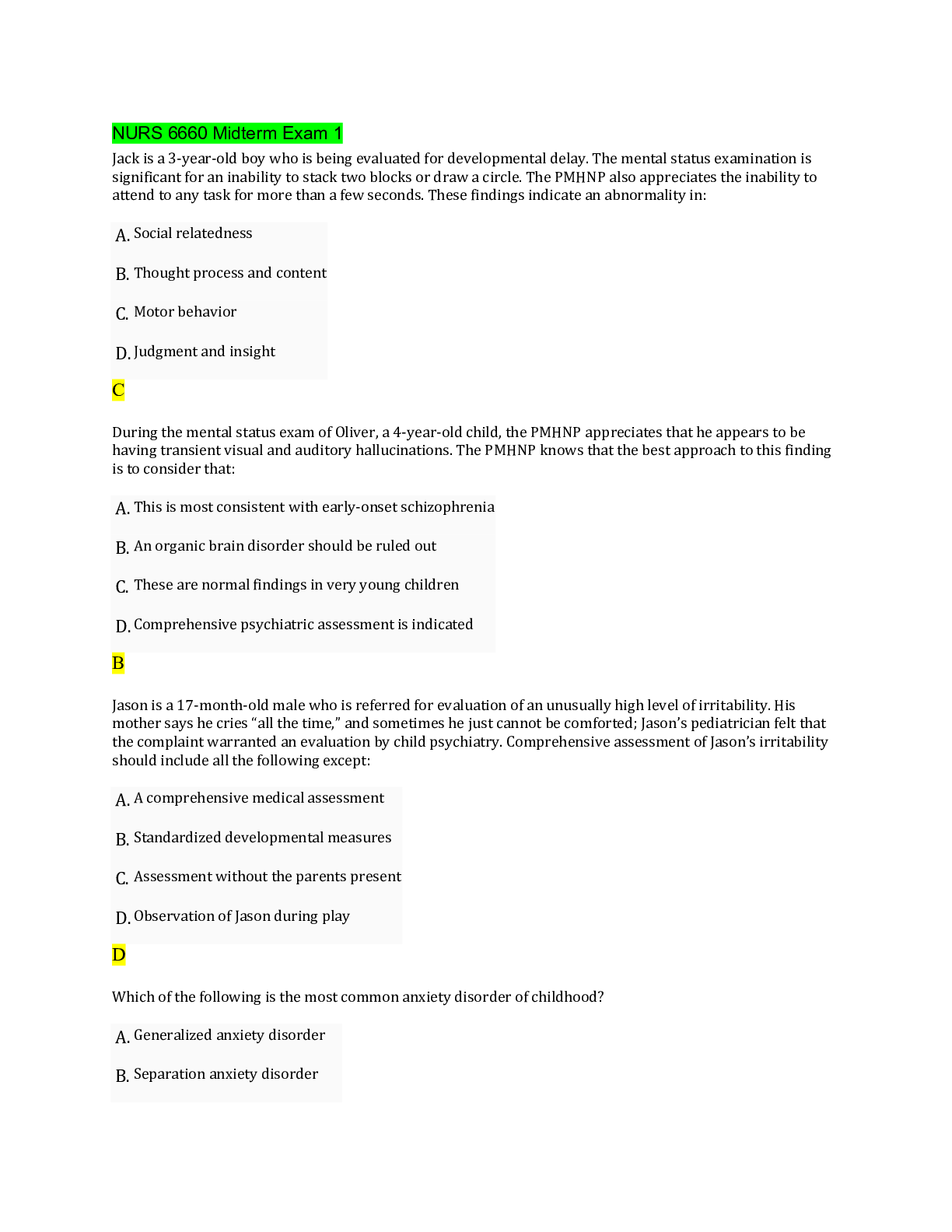
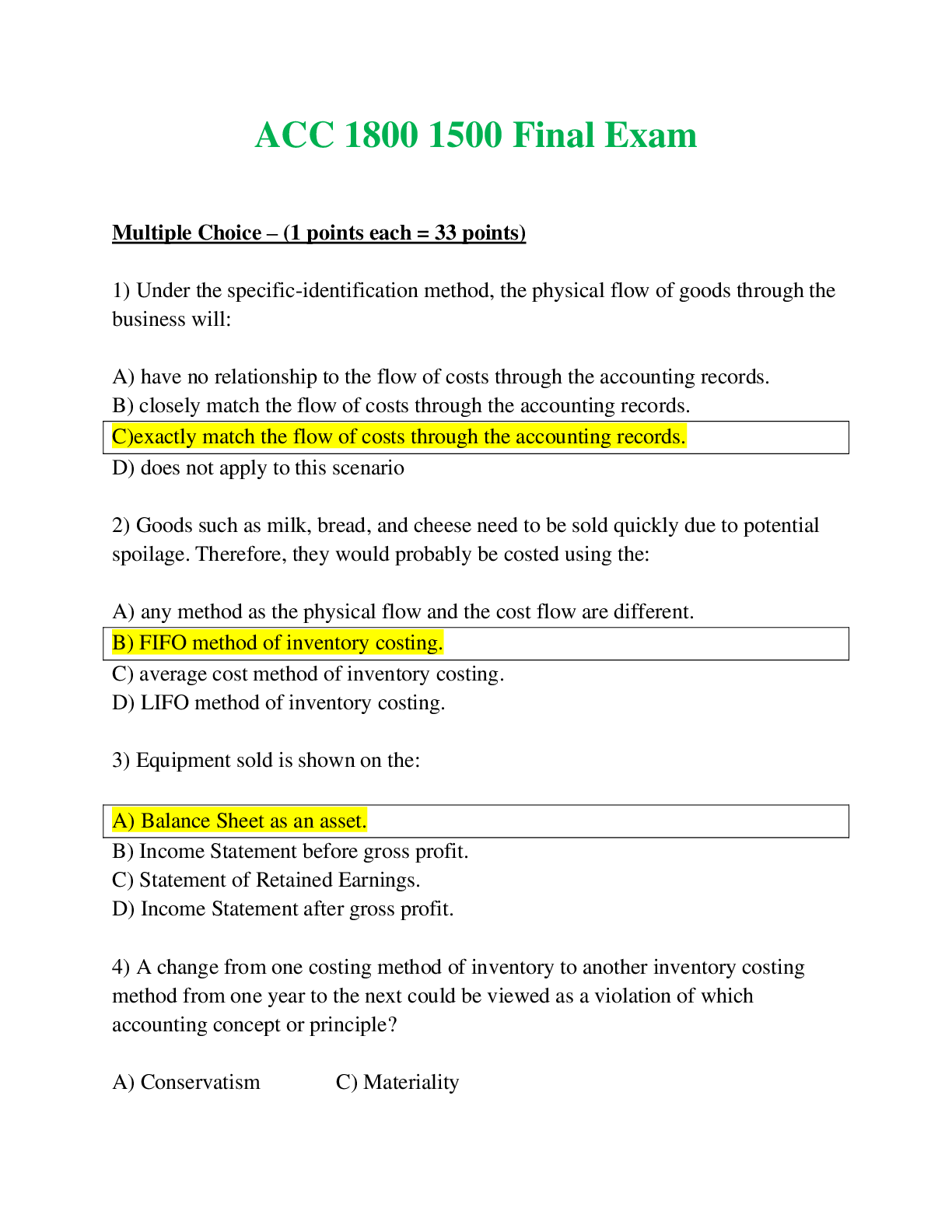

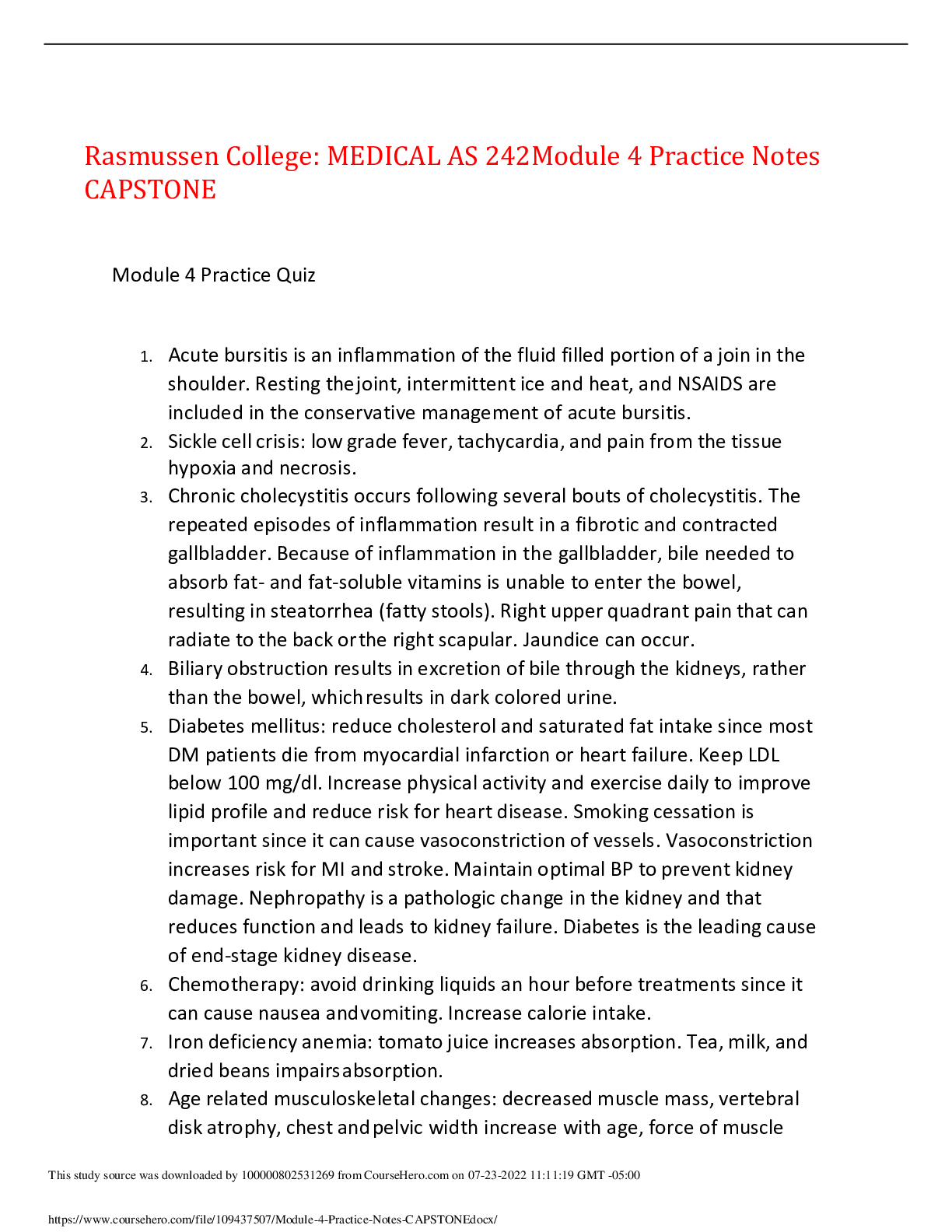


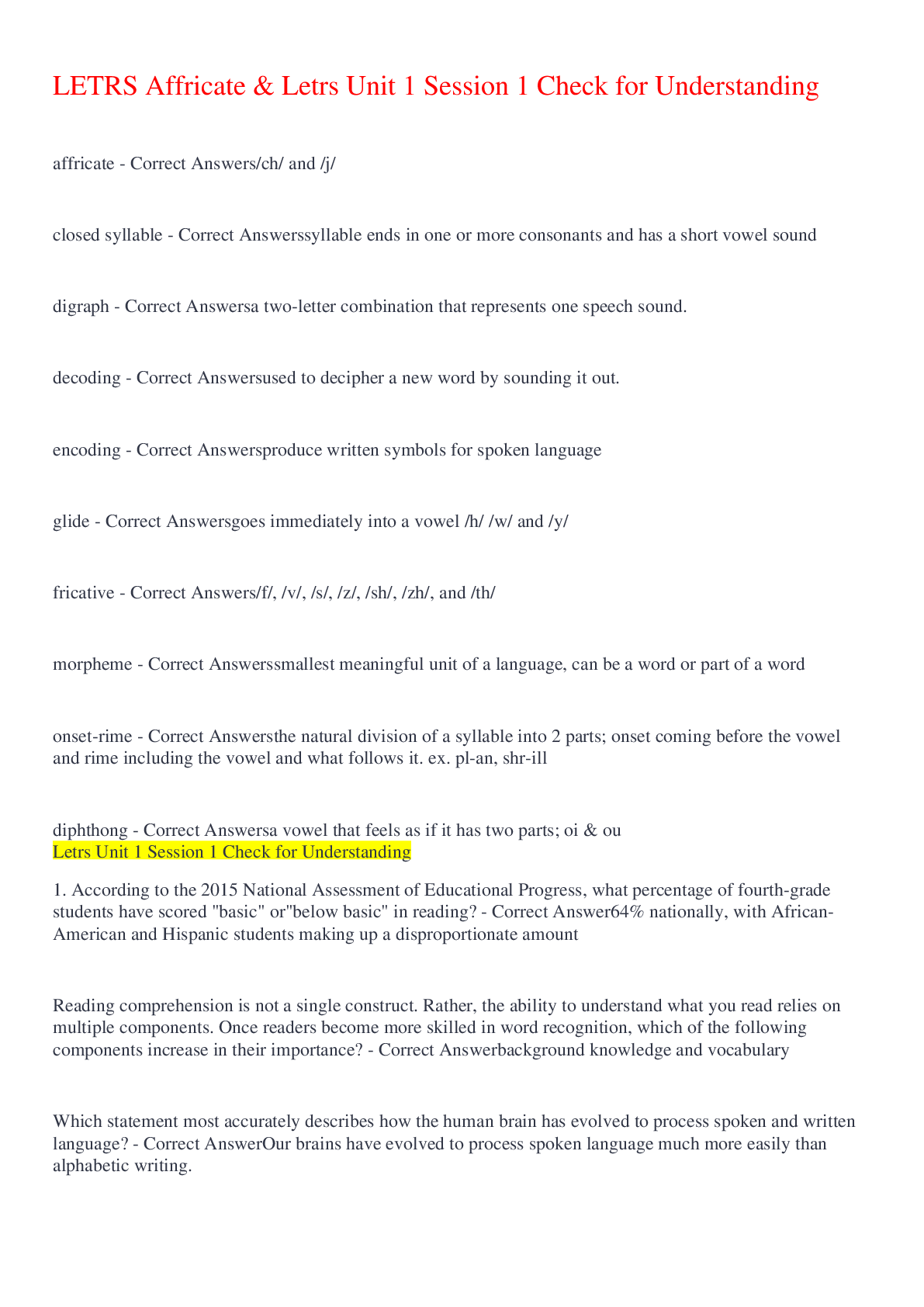

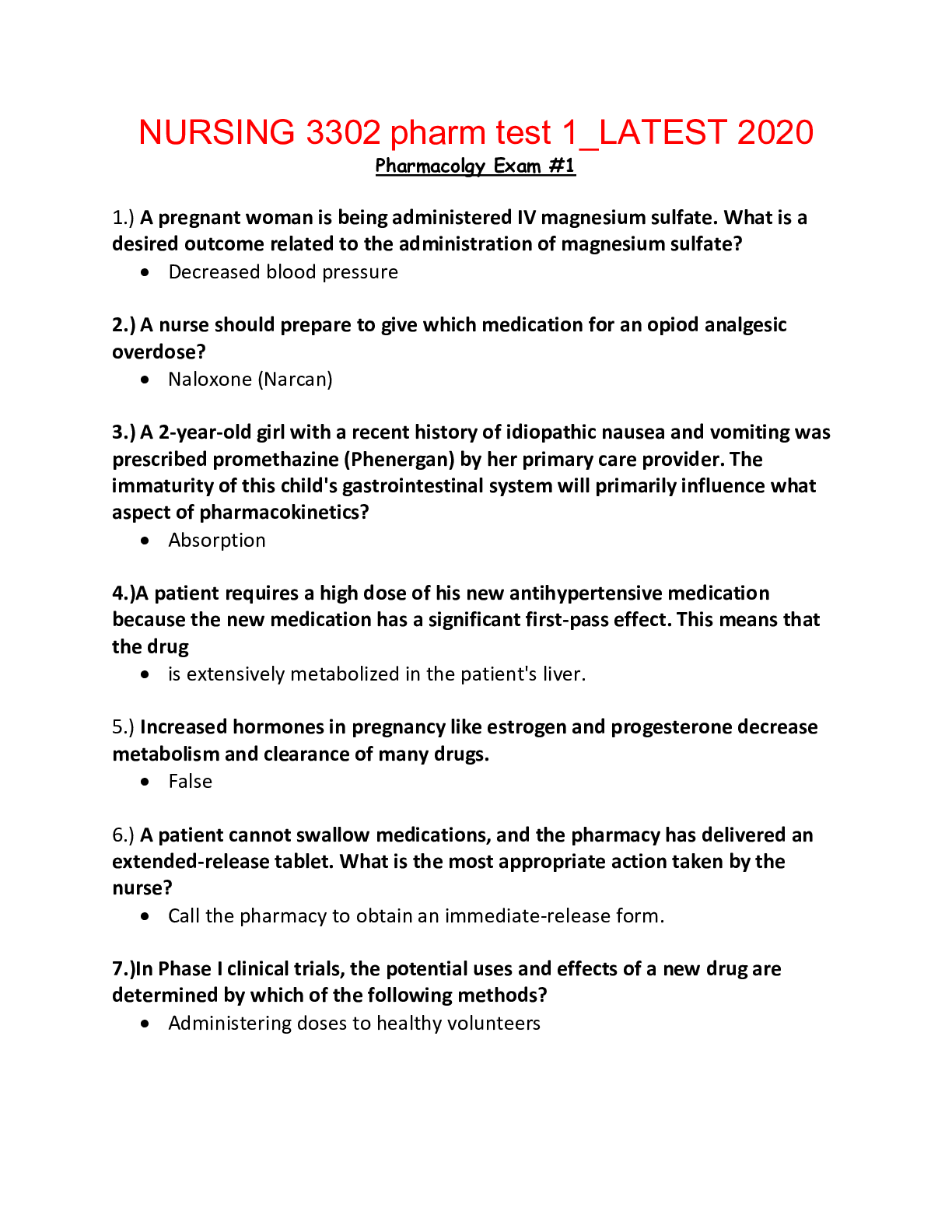
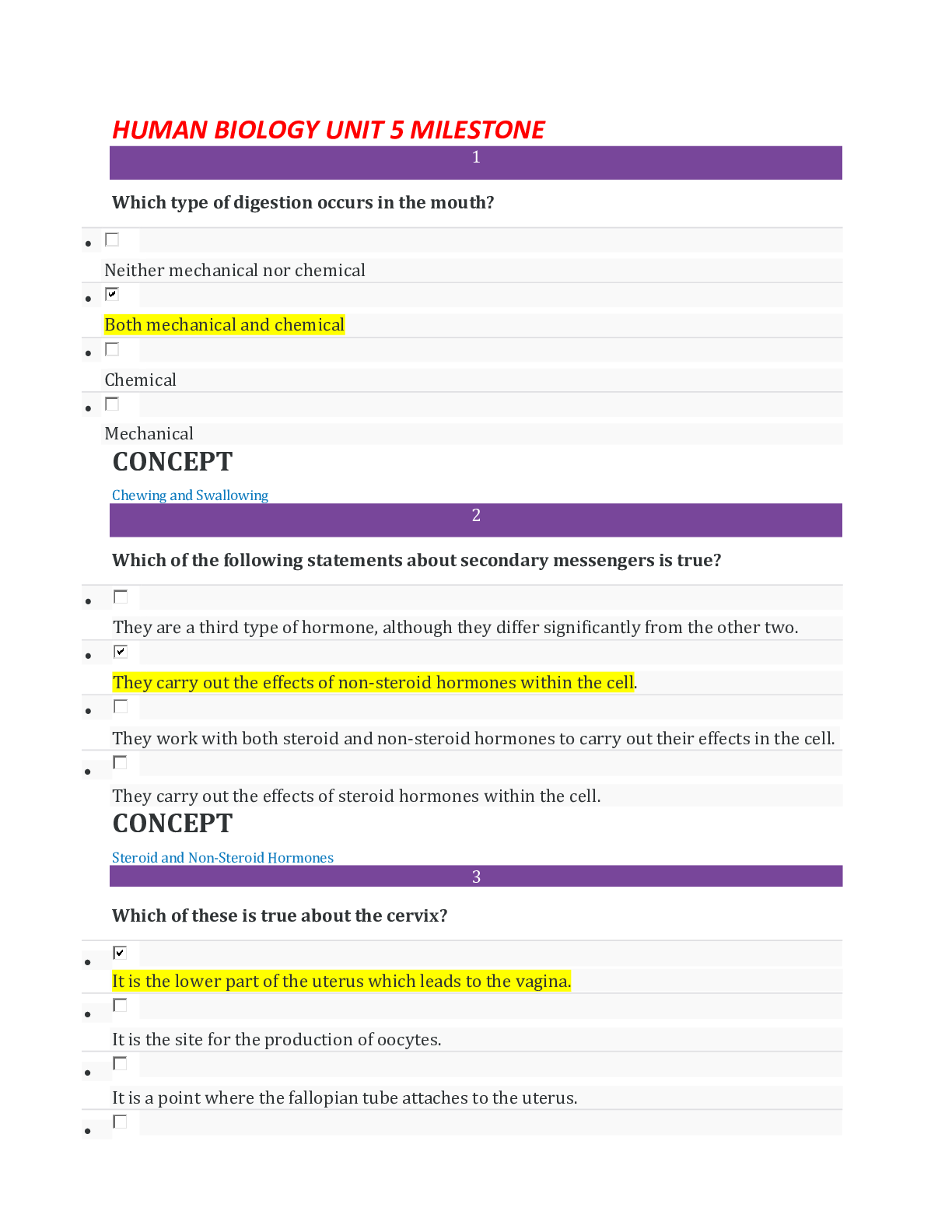
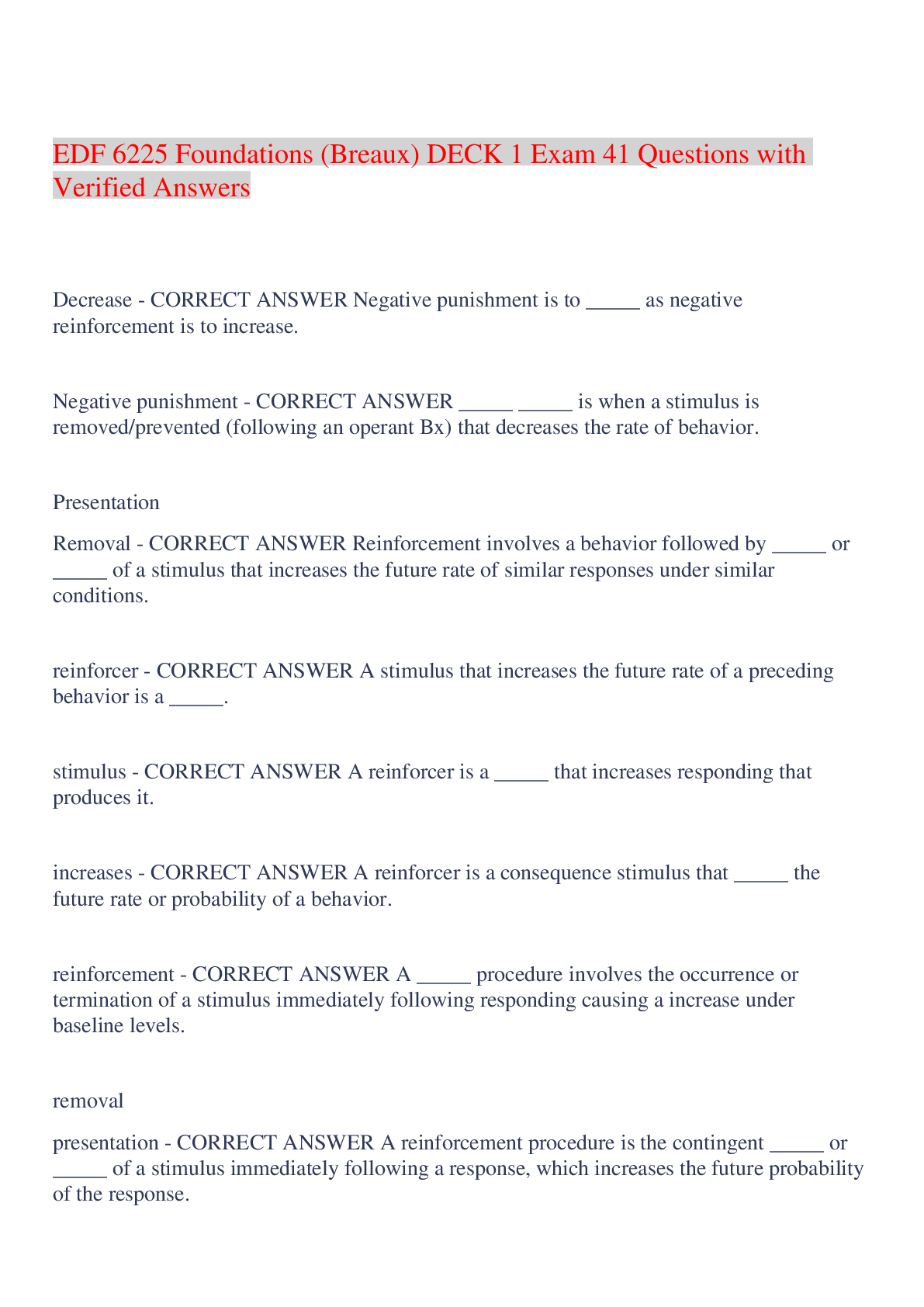






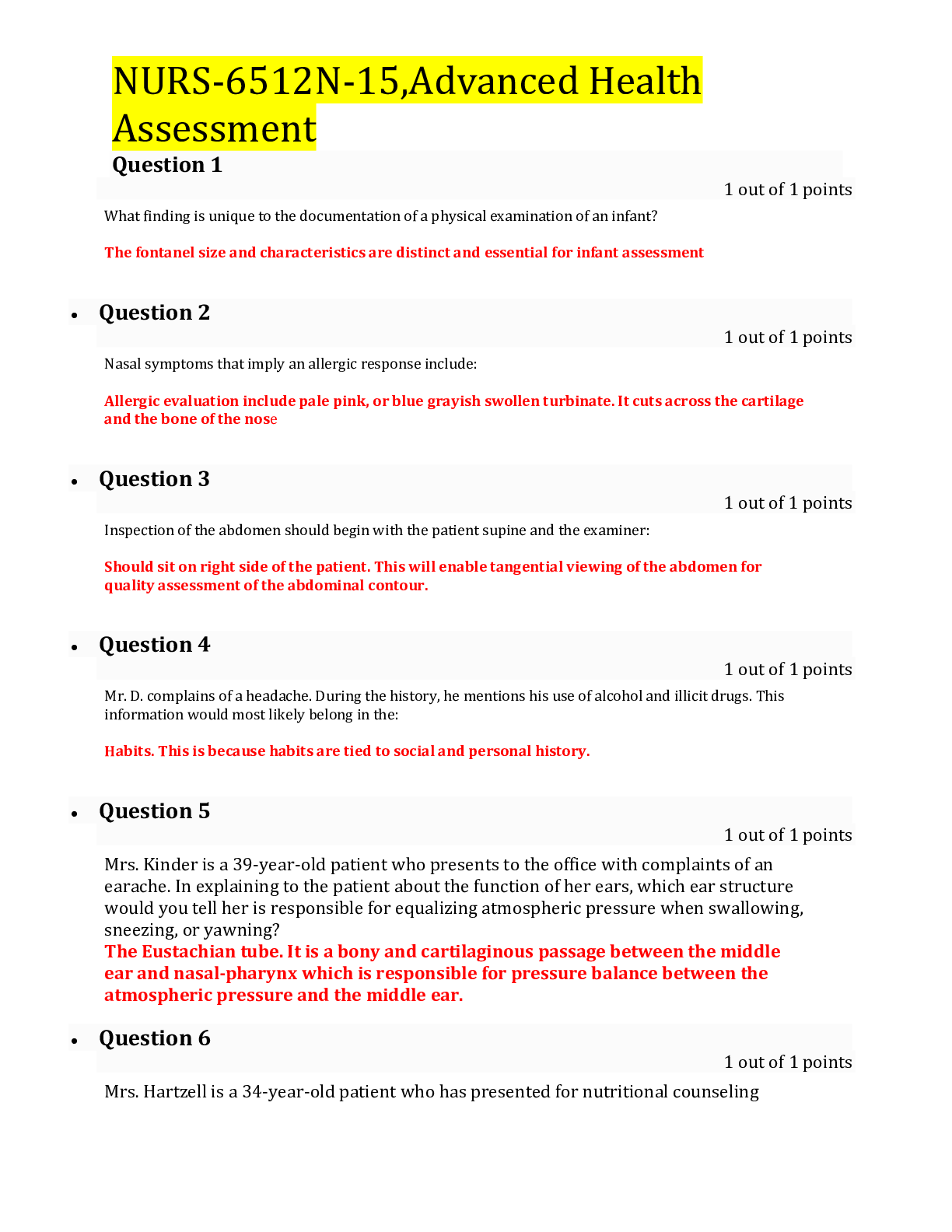
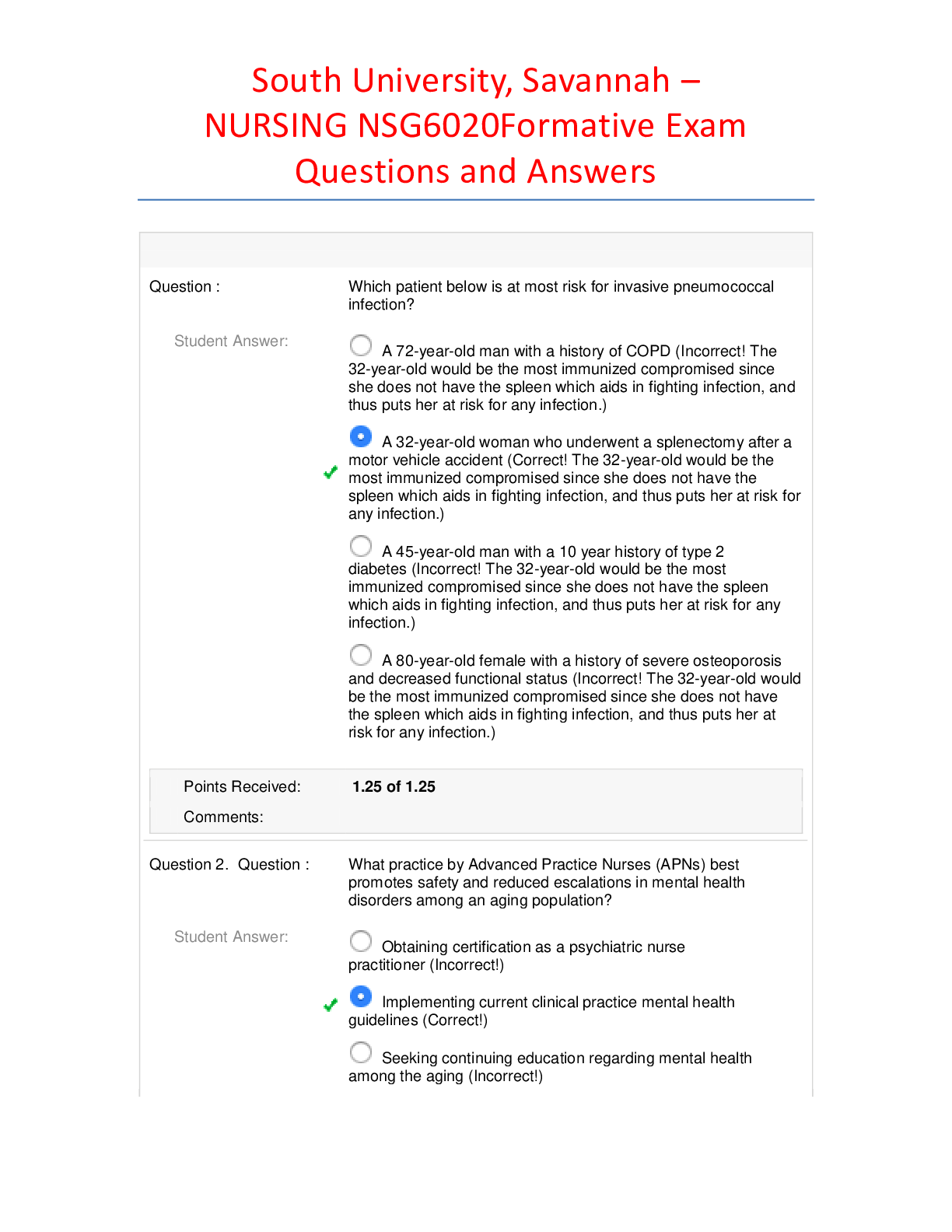


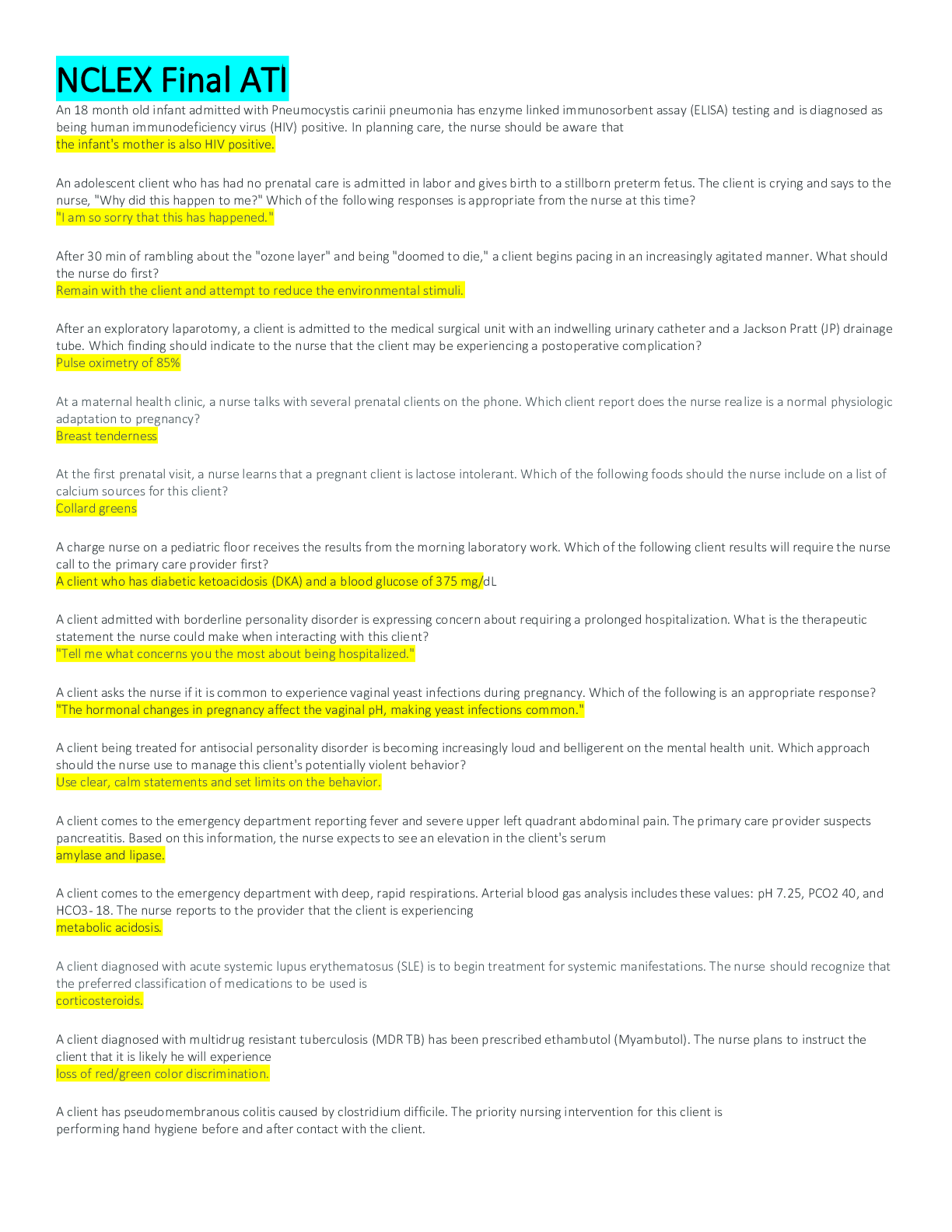
.png)

